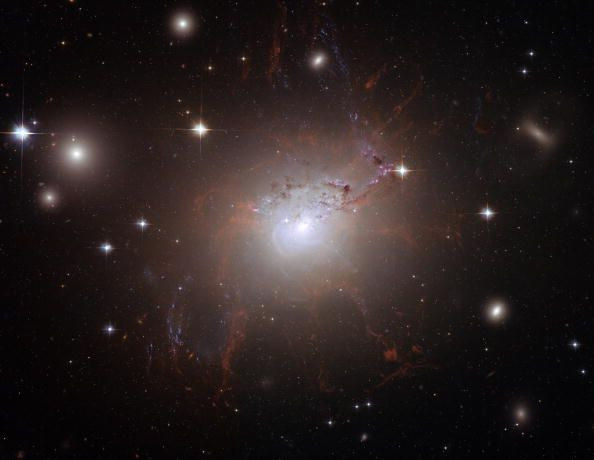Big Bang Fossil Discovered: Rare Relic Could Help ‘Origin Of Universe’ Research

A rare Big Bang relic that could help in the research of the origin of the universe has been discovered.
With the use of the world's most powerful optical telescope, astronomers at the W. M. Keck Observatory on Maunakea, Hawaii found a relic cloud of gas that was orphaned after the Big Bang in the distant universe.
The discovery, the findings of which will be published in the journal Monthly Notices of the Royal Astronomical Society, was made by a team led by Professor Michael Murphy at Swinburne University of Technology and Ph.D. student Fred Robert. According to the scientists, the extremely rare relic could provide new information on how the first galaxies in the universe formed.
Robert told Science Daily that the gas in the universe that they usually find is polluted by waste elements from supernovae. However, the new cloud they discovered appeared to be pristine and unpolluted even 1.5 billion years after the Big Bang.
Robert and his team determined that the amount of heavy elements it may have, if it does have any, could be minuscule compared to that of other clouds of gas, perhaps less than 1/10,000th of the proportion they observed in the Sun. This led them to believe that this new discovery is a true relic of the Big Bang.
To observe the spectrum of quasar behind the cloud of gas, Robert and his colleagues used the Echellette Spectrograph and Imager (ESI) and the High-Resolution Echelle Spectrometer (HIRES), which can both be found in the Keck Observatory.
The quasar emits a bright glow of material falling into a supermassive black hole and provides a light source against which the spectral shadows of the hydrogen in the gas cloud can be seen. According to Robert, this led to their success.
He revealed that by focusing on quasars, unlike previous scientists who only saw shadows from hydrogen and not from heavy elements in lower-quality spectra, they were able to make this extremely rare find despite the limited time they had with the Keck Observatory's most powerful telescopes.
The cloud of gas is one of only three fossil clouds ever discovered. In 2011, Professor Michele Fumagalli of Durham University, Professor J. Xavier Prochaska of the University of California, Santa Cruz and John O'Meara, formerly a professor at St. Michael's College and now the new Chief Scientist at Keck Observatory, discovered the only other two relics. Fumagalli and O'Meara were also part of the team that discovered the third cloud of gas.
O'Meara said that the first two fossil clouds were "serendipitous" discoveries and thought to be only two of many. However, they ended up being extremely rare as no one had discovered more fossil clouds since. And he's thrilled that one was finally discovered systematically.
"It's now possible to survey for these fossil relics of the Big Bang," Murphy said. "That will tell us exactly how rare they are and help us understand how some gas formed stars and galaxies in the early universe, and why some didn't."
© Copyright IBTimes 2024. All rights reserved.





















